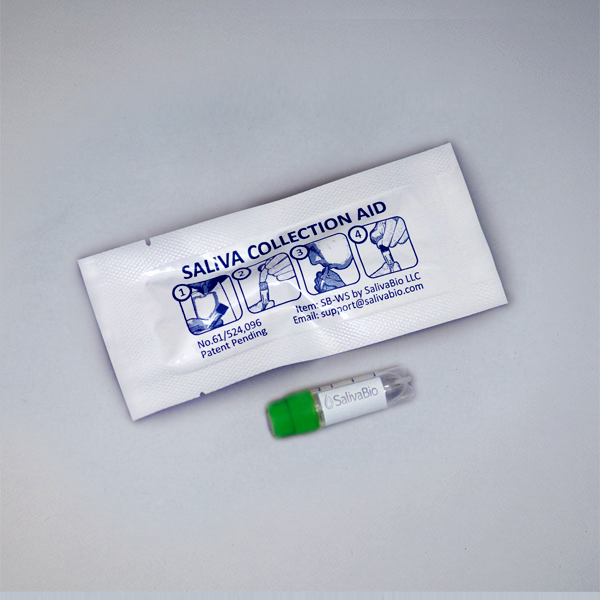Need Help?
Ask an expert
1. How to collect Salivary Interleukin-5
APPROVED SALIVARY CYTOKINE COLLECTION METHODS
Salivary Cytokine Collection Protocol
Collection volume, general considerations, and basic guidelines to maximize salivary IL-5 sample integrity. Use this analyte-specific collection protocol to plan you collection methodology and sampling schemes.

2. How to Assay for Salivary Interleukin-5
Send Saliva Samples to Salimetrics
Add to StudyEasy and accurate results from the most trusted Salivary Bioscience Laboratory.
Order Code5209
3. Technical Summary
| Analyte Summary | |
|---|---|
| Analyte: | Interleukin-5 |
| Aliases: | IL-5, EDF |
| Serum-Saliva Correlation: | NA |
| Optimum Collection Volume: | 100 μL |
| Assay Summary | |
|---|---|
| Methodology: | ECL |
| Sensitivity: | 0.22 pg/mL |
| Assay Range: | 0.22 – 562 pg/mL |
| Assay Type: | Quantitative |
Background
Human Interleukin 5 (IL-5), mainly drives the maturation and maintenance of eosinophils and antibody secreting B cells and is a glycosylated 15.2 kDa disulfide linked homodimer mainly produced by eosiniophils (1) and T helper type 2 (Th2) cells (2). Dysregulation of IL-5 is associated with eosinophilia, atopic dermatitis and pulmonary fibrosis. IL-5 is also expressed in the mast cells of asthmatic airways (1) and is a promising drug target for the treatment of asthma and COPD (3). In fact, three therapeutic monoclonal antibodies (mepolizumab, benralizumab and reslizumab) have received FDA approval targeting IL-5 to treat severe eosinophilic asthma (4, 5). Measuring IL-5 in oral fluid is of interest for asthma and COPD researchers since fluids from the lung exchange with saliva and levels are elevated in asthmatic patients (5). Salivary biomarkers for asthma are appealing to researchers as they enable on demand sample collection, for example before and after asthmatic attacks, which enable testing of samples that have been collected at times that are difficult to achieve during a visit to a physician’s office or clinic.
References & Salivary IL-5 Research
- Dubucquoi S, Desreumaux P, Janin A, Klein O, Goldman M, Tavernier J, et al. (1994). Interleukin 5 synthesis by eosinophils: association with granules and immunoglobulin-dependent secretion. J Exp Med. 179(2):703-8.
- Yanagibashi T, Satoh M, Nagai Y, Koike M, Takatsu K. (2017). Allergic diseases: From bench to clinic – Contribution of the discovery of interleukin-5. Cytokine. 98:59-70.
- Narendra DK, Hanania NA. (2019). Targeting IL-5 in COPD. Int J Chron Obstruct Pulmon Dis. 14:1045-51.
- Busse W, Chupp G, Nagase H, Albers FC, Doyle S, Shen Q, et al. (2019). Anti-IL-5 treatments in patients with severe asthma by blood eosinophil thresholds: Indirect treatment comparison. J Allergy Clin Immunol. 143(1):190-200 e20.
- Ballou SP, Lozanski G. (1992). Induction of inflammatory cytokine release from cultured human monocytes by C-reactive protein. Cytokine. 4(5):361-8.
 Contact: Salimetrics (USA)
Contact: Salimetrics (USA)



